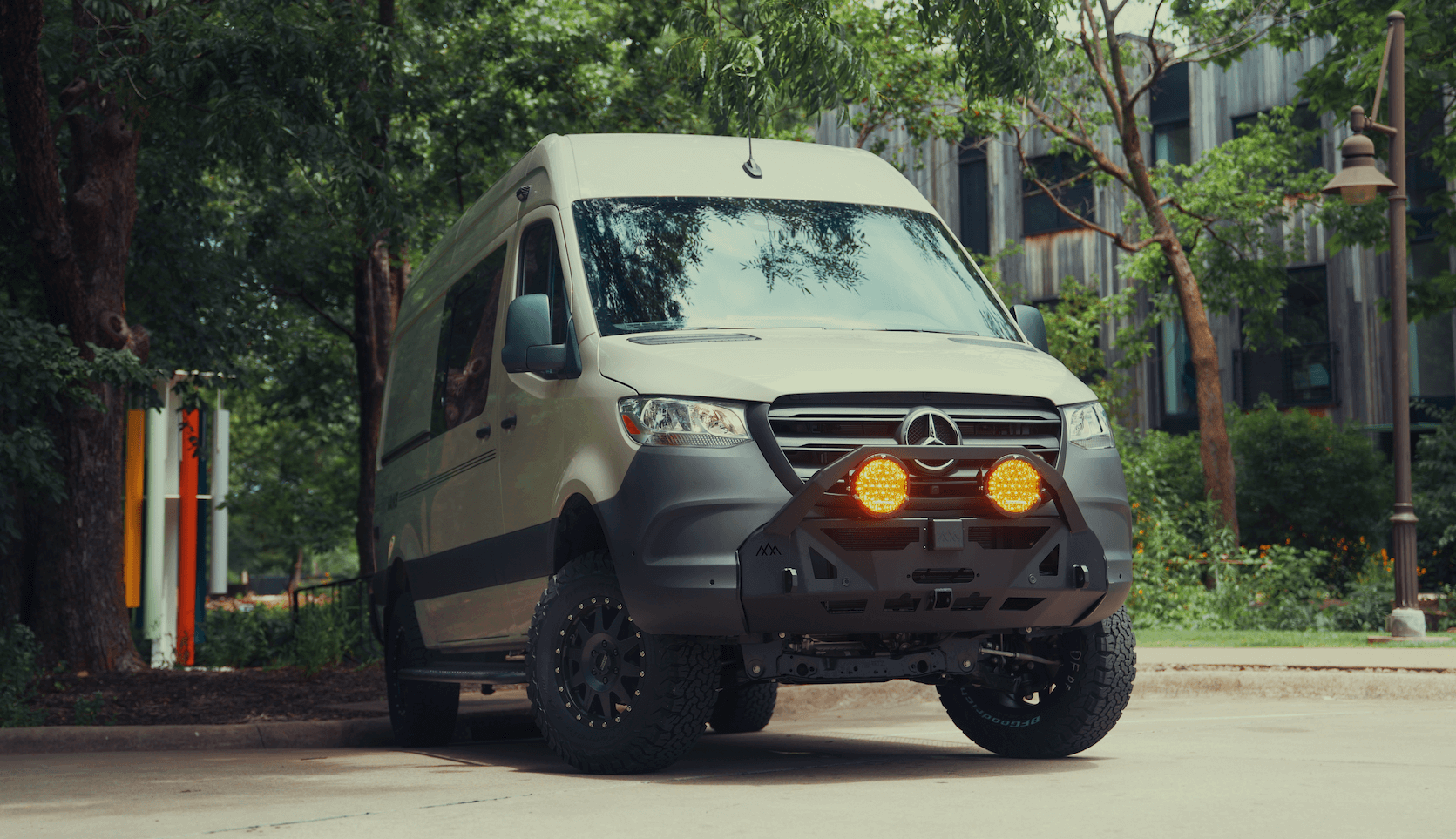Recreational Vans

A rear barn door shower turns the back of a van into a practical wash zone. With the doors open, you gain height, airflow, and a natural place to hang a curtain for privacy. By keeping water outside the living space, humidity stays low and interior finishes last longer. The rear area also handles gritty tasks like rinsing bikes, sandy feet, and muddy boots without bringing the mess inside. Many travelers prefer this layout because it preserves floor space for sleeping, gear storage, or a galley instead of enclosing a wet bath.
Privacy starts with a curtain that mounts to door edges or a rail tucked behind the weather seal. A quick clip system makes setup fast, while magnets tame wind. For splash control, a compact shower pan or a portable mat can catch runoff. Add a silicone guard at the threshold to keep water from creeping into the cargo floor. When you use a pressure controlled sprayer with a gentle cone pattern, you reduce overspray and conserve water.
A reliable rear barn door shower depends on a solid water supply, sensible heating, and consistent flow. Most builds use a 12 volt pump, an accumulator to smooth pulses, and a mixing valve or dual line faucet for temperature control. Quick connect fittings at the door let you stow the hose and sprayer when not in use. If you run hot water, options include an engine tied heat exchanger, an electric boiler sized to your battery system, or a compact propane unit with proper ventilation. Match the heater to your energy budget so you do not drain batteries or carry fuel you will not use.
Tank size sets your routine. A solo traveler can get clean with ten to fifteen gallons per trip if they practice short navy showers. Add a low flow head with a pause button and you will stretch reserves further. For heating, electric works well with a strong lithium bank and solar, while propane or a heat exchanger suits colder trips or frequent showers. Keep lines insulated near the doors. Cold air at the rear can drop water temperature before it reaches the sprayer if you skip insulation.
Plan where the water goes before you ever take the first rinse. Some campsites require gray water containment, so a shallow pan that drains to a portable tank is a simple, compliant solution. In dispersed areas where conditions allow, spread drainage on durable ground away from waterways and never use harsh soaps. Add texture to the shower mat to prevent slips, and route hoses to avoid tripping at the threshold. When you wrap up, purge the line and hang the hose to dry so fittings last.
A removable pan with a hose barb lets you direct flow to a sealed gray tank or a collapsible container. Use a mesh hair trap at the drain to protect your pump and keep tanks cleaner. If you park on uneven ground, a small leveling block under the pan corner guides water to the outlet. After a muddy rinse, a quick wipe and a freshwater splash keep residue from hardening.
Winter brings two concerns, freezing and rust. Drain and blow out the rear line when temperatures drop, or add a bypass so you can isolate the rear shower from the rest of the system. Heat tape and insulation can protect short runs, but always use components rated for mobile installations. For corrosion control, rinse road salt from hinges, latches, and the rear bumper area, then dry with a microfiber towel. A light coat of protectant on metal fasteners and a sealed plywood backer behind mounts prolongs service life.
Keep the rear tidy so it sets up fast. Many builders mount a compact hose reel or a soft coiled hose inside the door pocket. A small caddy holds sprayer, soap, and cloths. Use stainless hardware with sealed rivnuts in the door to avoid sheet metal fatigue. If you add a light above the shower, choose a warm LED with a focused beam. Soft light helps you see the stream without drawing bugs.
At night, a reflective lined curtain brightens the space and acts like a windbreak. In crowded campgrounds, a darker curtain with a weighted hem feels discreet. For families, mark kid safe temp settings on the mixing valve so repeats are easy and safe. A timer on the heater prevents forgetful energy use, and a quick connect at hip height is easier to reach with cold fingers.
When you plan a rear barn door shower, think like a systems tech. Water in, water out, safe temperature, clean storage, and minimal setup time. Choose components that match your power system and travel season, then test flow and splash at home.
If you want a professionally engineered rear barn door shower that integrates with a full water and power system, our team designs and installs complete solutions that fit your van and travel style. Explore our recreational vans to see the types of builds we complete, look at custom build vans for tailored layouts, or review mainstream vans if you are considering a platform that finances. Tell us your water capacity goals, privacy needs, and cold season plans, and we will spec the pump, heater, plumbing, and mounting so your shower works on day one and every trip after.
Ready for a clean, space saving shower that works every weekend and all season. Tell us how you travel and we will design and install a rear barn door shower that fits your water system, storage, and daily routine. Share your timeline and must haves, and our team will send a clear plan and quote.
ADDRESS:
6159 E Huntsville Rd, Fayetteville, AR 72701
PHONE:
(479) 326-9200
EMAIL:
info@ozkvans.com